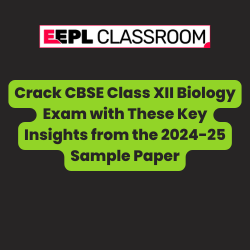Understanding the Exam Format
Understanding the board exam format is crucial for effective preparation and performance. Board exams typically consist of various types of questions that assess a student’s knowledge and analytical abilities. The most common formats include multiple-choice questions, short answer questions, and essay questions. Each of these formats requires different strategies and approaches for crafting appropriate responses.
Multiple-choice questions (MCQs) often test a student’s understanding of specific facts and concepts. These questions can be straightforward but may also contain distractors that challenge well-prepared students. Familiarity with MCQs can enable candidates to quickly identify the correct answer, saving valuable time during the exam. On the other hand, short answer questions require concise and precise responses that directly address the question. Practicing these formats can aid students in developing the ability to articulate their thoughts clearly and succinctly.
Essay questions are designed to evaluate a student’s ability to construct a cohesive argument or narrative. These questions necessitate comprehensive knowledge of the subject and the skill to organize thoughts logically. Understanding how to effectively respond to essay questions, including outlining main points and supporting arguments with evidence, is vital for achieving high marks. Consequently, students should engage deeply with the format as it will significantly inform their response strategies.
Additionally, recognizing the structure of the exam aids in effective time management. By understanding how each question type is weighted and the allocated time for each section, students can distribute their time accordingly. This planning ensures that students can complete all parts of the exam without unnecessary haste. Overall, gaining a clear insight into the board exam format provides a foundation for better preparation and enhances the likelihood of success on exam day.
Planning Your Answers
Effective preparation is crucial for achieving success in board exams, and a significant aspect of this preparation involves planning your answers. Before pen meets paper, understanding the question fully is paramount. This comprehension sets the foundation for formulating a clear and concise response, enabling students to identify the key points that must be addressed.
One effective planning technique is brainstorming. This involves writing down your initial thoughts and ideas related to the question. By allowing ideas to flow without restriction, students can uncover various angles from which they can approach the answer. Once this initial phase is complete, the next step is to refine these thoughts into a more structured format through outlining. An outline acts as a roadmap for your response, ensuring that the answer stays focused and flows logically. It allows students to organize their ideas into main points and supporting details, thereby enhancing clarity.
Moreover, it is essential to manage your time effectively during the exam. Allocate a specific portion of your exam time to planning; even a few minutes spent on this task can significantly improve the quality of your answer. While evaluating the question, prioritize the key aspects you wish to include and decide on the order in which you will present them. This not only helps in maintaining a logical flow but also assists in ensuring that no vital information is omitted.
In conclusion, planning answers before writing them down is a vital step in the exam process. Techniques such as brainstorming and outlining can help organize thoughts clearly, allowing for well-formed responses. Understanding the question and managing time effectively are critical components that contribute significantly to the overall quality of answers in board examinations.

Writing Clear and Concise Answers
In the context of board exams, producing answers that are both clear and concise is crucial for effective communication of ideas. One of the best strategies for achieving clarity is to employ simple language that communicates thoughts without unnecessary complexity. The use of straightforward vocabulary allows examiners to easily understand the responses, making a significant difference in scoring.
Avoiding jargon is another important consideration. While it may be tempting to use specialized terms to demonstrate expertise, this can inadvertently obscure the message if the examiner is not familiar with the terminology. Instead, prioritize definitions and explanations that can be comprehended by individuals with varying levels of understanding. This approach helps in maintaining focus on the answer’s core message, ensuring that the essential points are highlighted effectively.
Sticking to the point can significantly enhance the quality of responses. Exam candidates should practice articulating their thoughts succinctly, relevantly addressing the questions posed, and avoiding superfluous information. It is beneficial to create a structure for the thoughts, beginning with a clear thesis statement, followed by supporting arguments that are logically ordered. This tactic not only makes for a compelling answer but also aids in remembering key details during exams.
When elaborating on key points, it is essential to balance depth of discussion with brevity. Provide enough detail to make your argument compelling without veering off-topic or offering excessive information that may confuse or distract from the main idea. Clear examples of well-structured answers can be instructive; bullet points or numbered lists could be employed when appropriate to facilitate the communication of multiple points. Lastly, neat handwriting and organized presentation of answers are pivotal, as clarity in physical presentation contributes significantly to overall readability and first impressions on the examiner.
Reviewing and Revising Your Answers
Reviewing and revising your answers before submitting your exam booklet is a crucial step in the examination process that can significantly enhance your performance. The review phase allows students to identify and correct potential errors, ensuring that their responses are as accurate and coherent as possible. During this critical stage, students should focus on several key areas, including grammar, spelling mistakes, and the overall clarity of their responses.
One effective technique for revision is to read your answers aloud. This practice not only aids in spotting grammatical errors but also helps you assess the flow of your answers. Hearing your responses can highlight awkward phrasing or sentences that may be unclear to the examiner. Additionally, it is advisable to check your answers against the questions to ensure that all parts are thoroughly addressed. This step is particularly important, as it minimizes the risk of leaving any part of a question unanswered, which can negatively impact overall marks.
Another useful strategy is to allow yourself a brief period of time to step away from your work before revisiting it for review. This break can provide you with a fresh perspective when you sit down to revise, enabling you to catch mistakes that you may have overlooked during the initial writing phase. Moreover, utilizing a checklist to guide your review process can be beneficial. Ensure that you systematically go through aspects such as content accuracy, relevance, and adherence to the provided guidelines.
Conclusion
In concluding your exam, committing just a few minutes to this essential revision process can make a substantial difference in your final results. The practice of thoroughly reviewing your answers not only mitigates the risk of common mistakes but also demonstrates to examiners that you have thoughtfully engaged with the material. Prioritizing this step can ultimately lead to improved outcomes in your board exams.
Read Our Latest Blog
The Science of Renewable Energy: Challenges and Innovations
Phone Number: +91-7488456170
Email ID: abhishek@eepl.me
Our Platforms:
Digilearn Cloud
EEPL Test
Live Emancipation
Follow Us on Social Media:
Instagram – EEPL Classroom
Facebook – EEPL Classroom
Stay connected and keep learning with EEPL Classroom!











